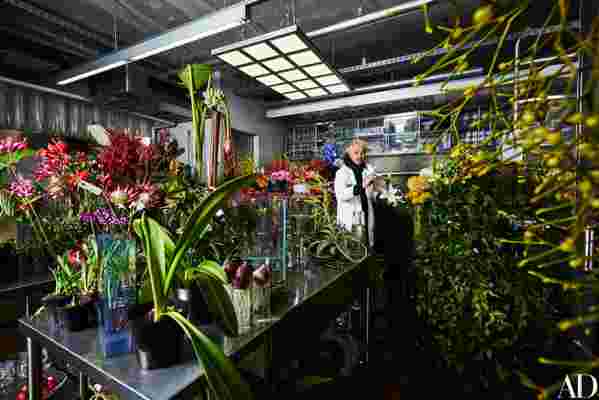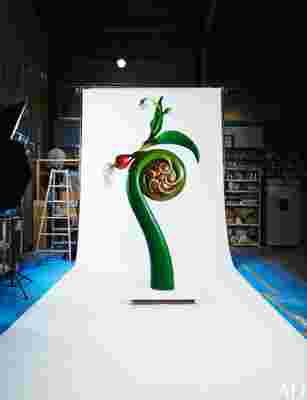The delicate art of floral design has long been mired in politesse—conventional, domestic, overtly feminine—but the work of Azuma Makoto is explosive, both literally and metaphorically. Over the course of two decades, the peroxide-blond Japanese superstar has set dahlias on fire, propelled a bonsai tree into space , and floated 10,000 heliconia blooms in the middle of an ocean, all to haunting effect. Traditional arrangements, these are not.
Azuma’s radical approach can be traced to his background as a musician. He played in a rock band in the 1990s until a part-time job at a flower market led him to his true calling. “I realized there were common points between music and flowers,” recalls Azuma , who also has created installations for Hermès and Fendi. “They are both momentary and unique. Just as there are many expressions of red roses, music is also different depending on the mental state of the player and the environment that it was created in.” Azuma says that hearing is still his most vital sense: “When I confront plants, instead of looking at their color and form, I try to listen.”



For Azuma fans, 2016 was a banner year. First, in March, at New York City’s Chamber gallery, he exhibited tree fungi coated with precious metals. Then, six months later, he set the fashion—and Instagram—world ablaze with nearly 30 monumental floral iceboxes made for the Dries Van Noten show in Paris (his second collaboration with the designer). Wild arrangements of Japanese gentian, Heliconia marginata lutea, clematis, cosmos, delphiniums, and oriental lilies from the Aalsmeer market in Amsterdam were sent to a Belgian factory to be encased in blocks of ice, trucked to the Van Noten venue, and set on a tiled runway where the ice gradually melted. “A flower’s life cycle is so short,” the artist says. “It is even more precious and heavy than a human being’s.”
At the root of Azuma’s oeuvre is the tension between science and the natural world. “Technology gives me options and ideas, but inspiration comes from the plants,” he notes. “Japanese people believe gods exist everywhere in nature, so we approach it with awe and reverence. Without that respect, the process of changing natural life into artworks with my own hands does not happen.”
For the full story, subscribe now and get the digital edition immediately.